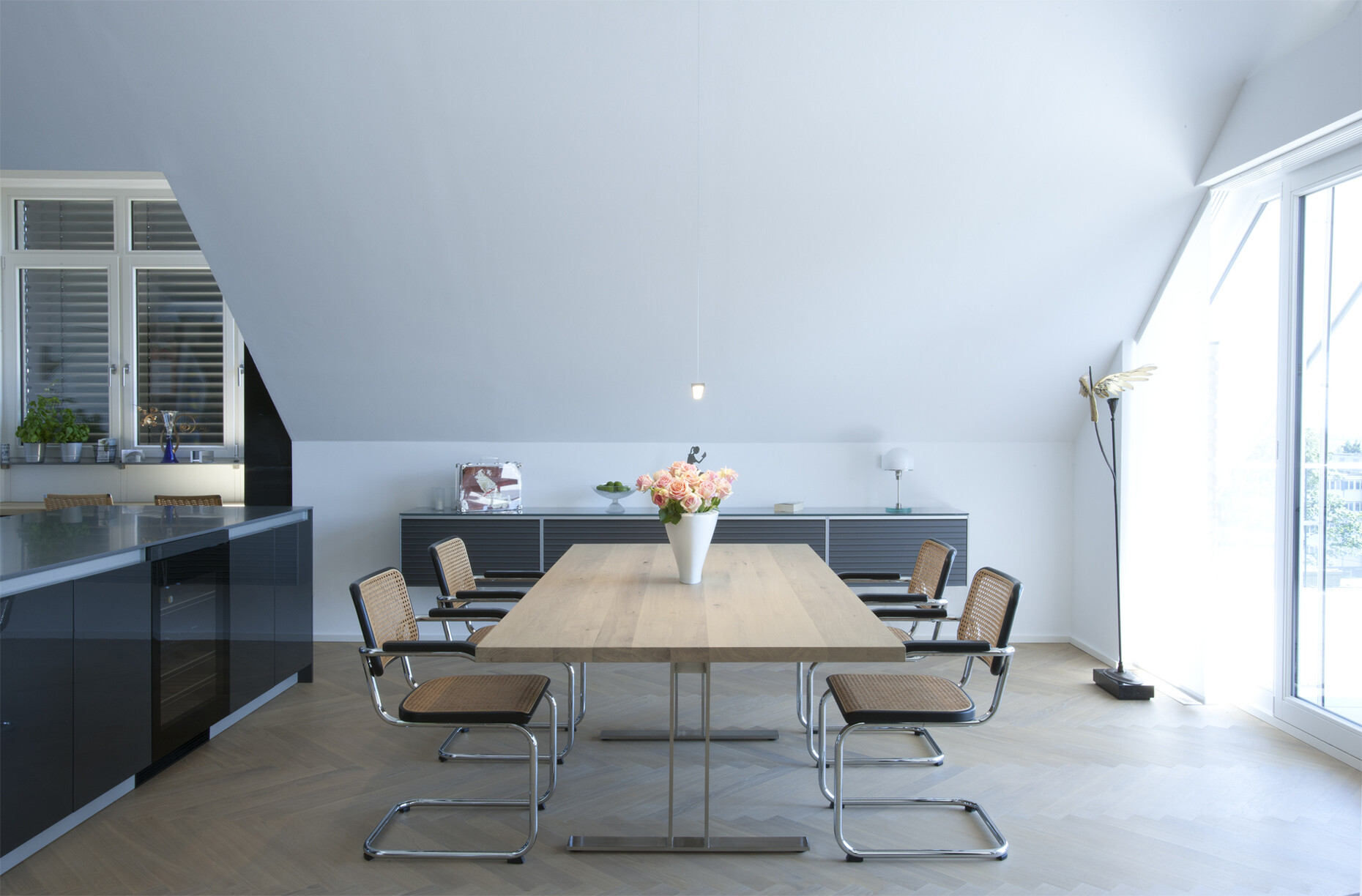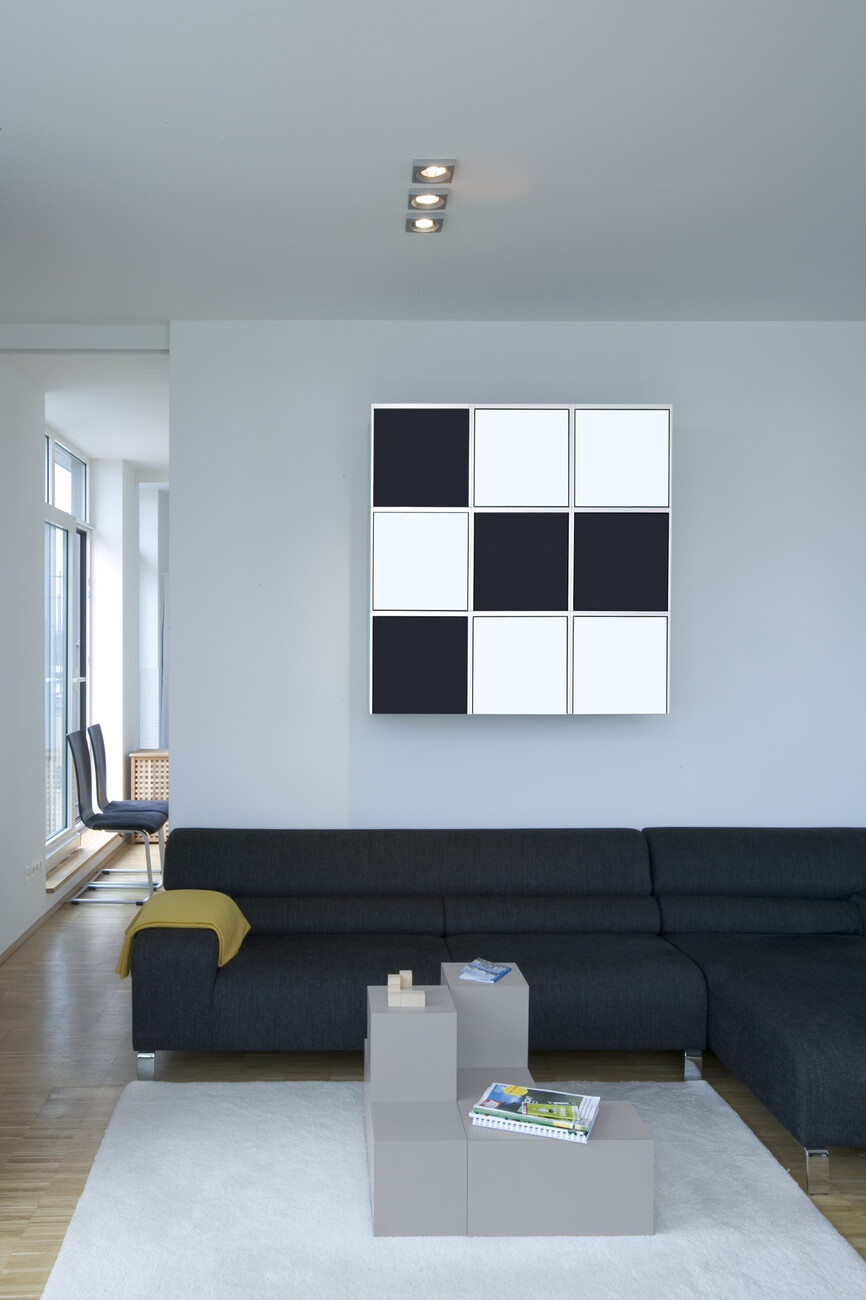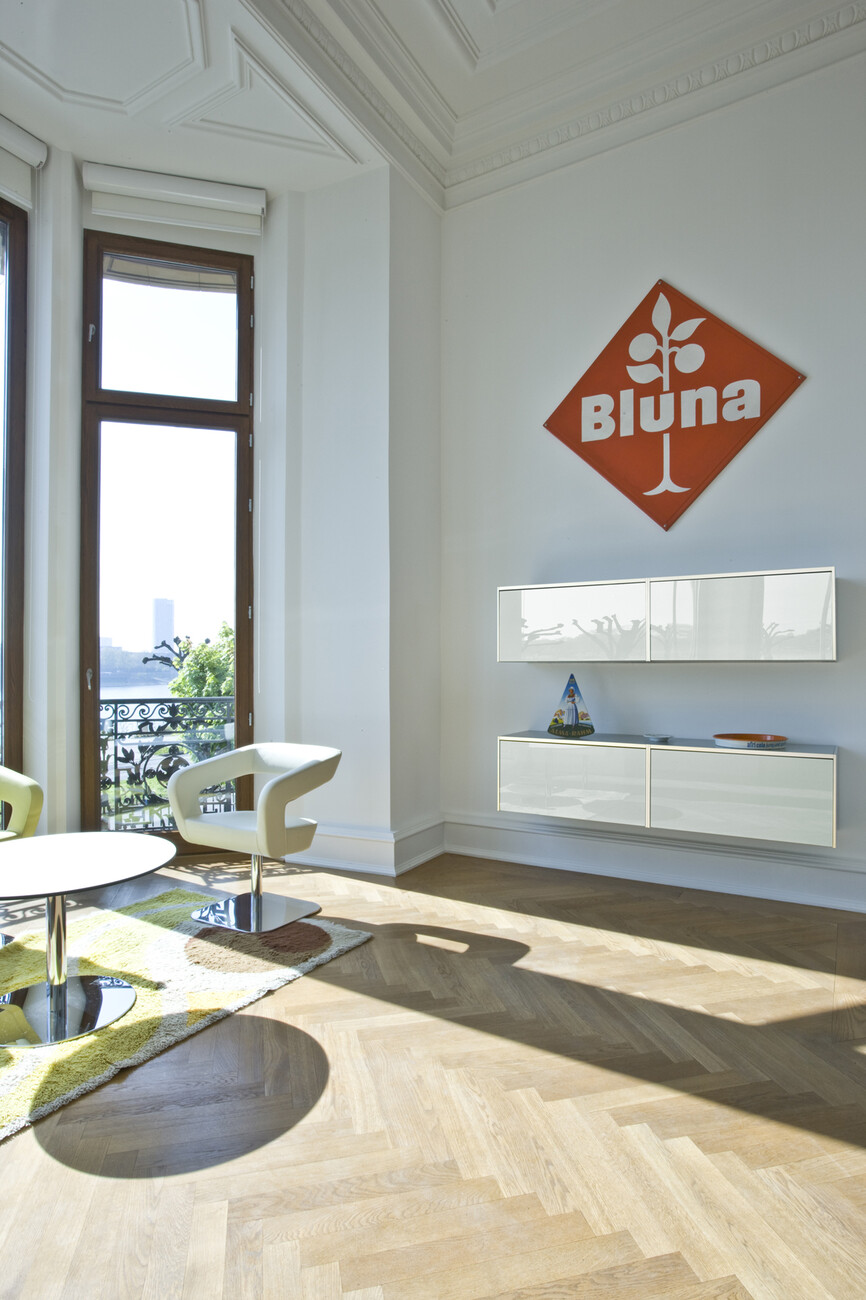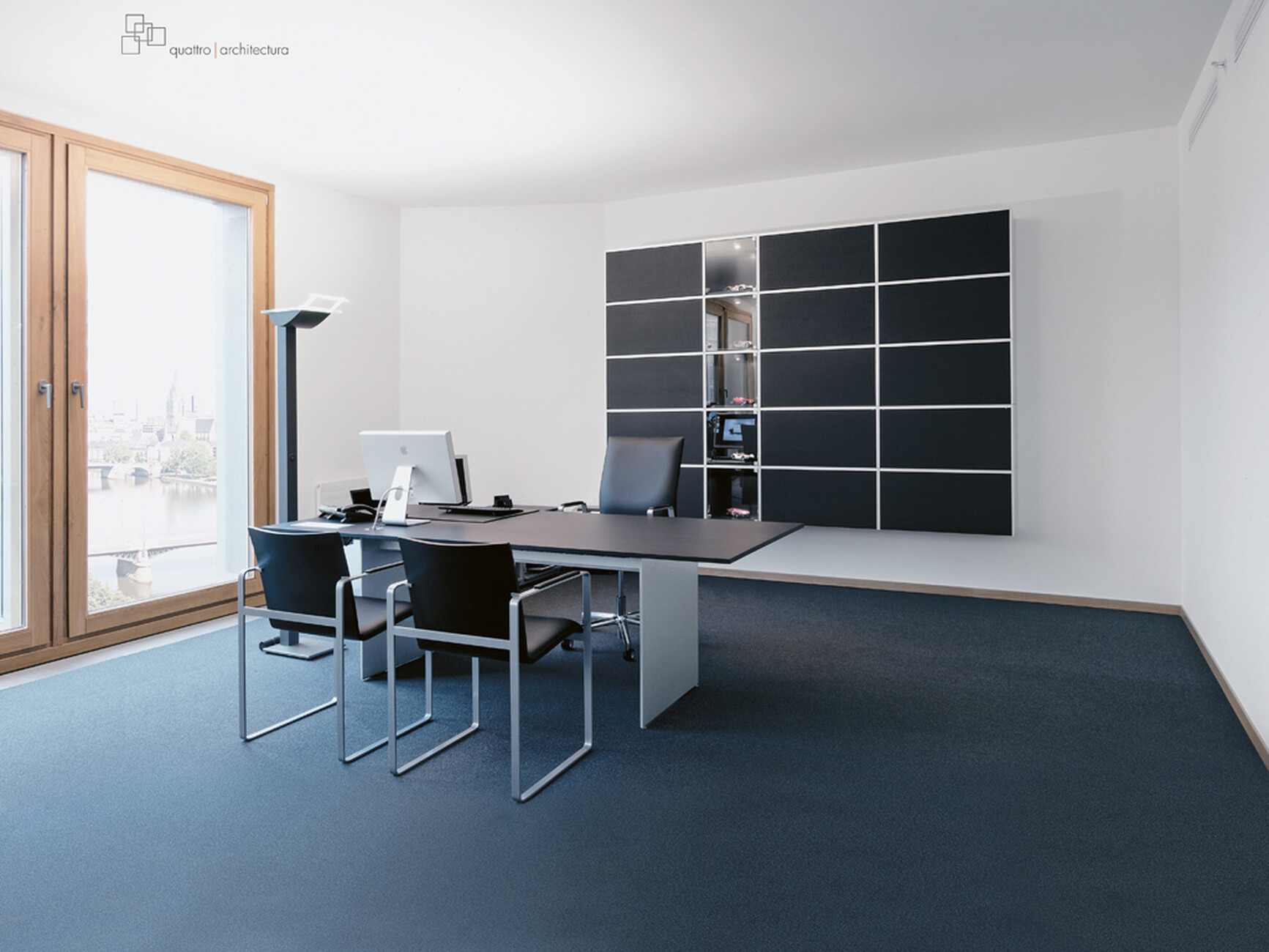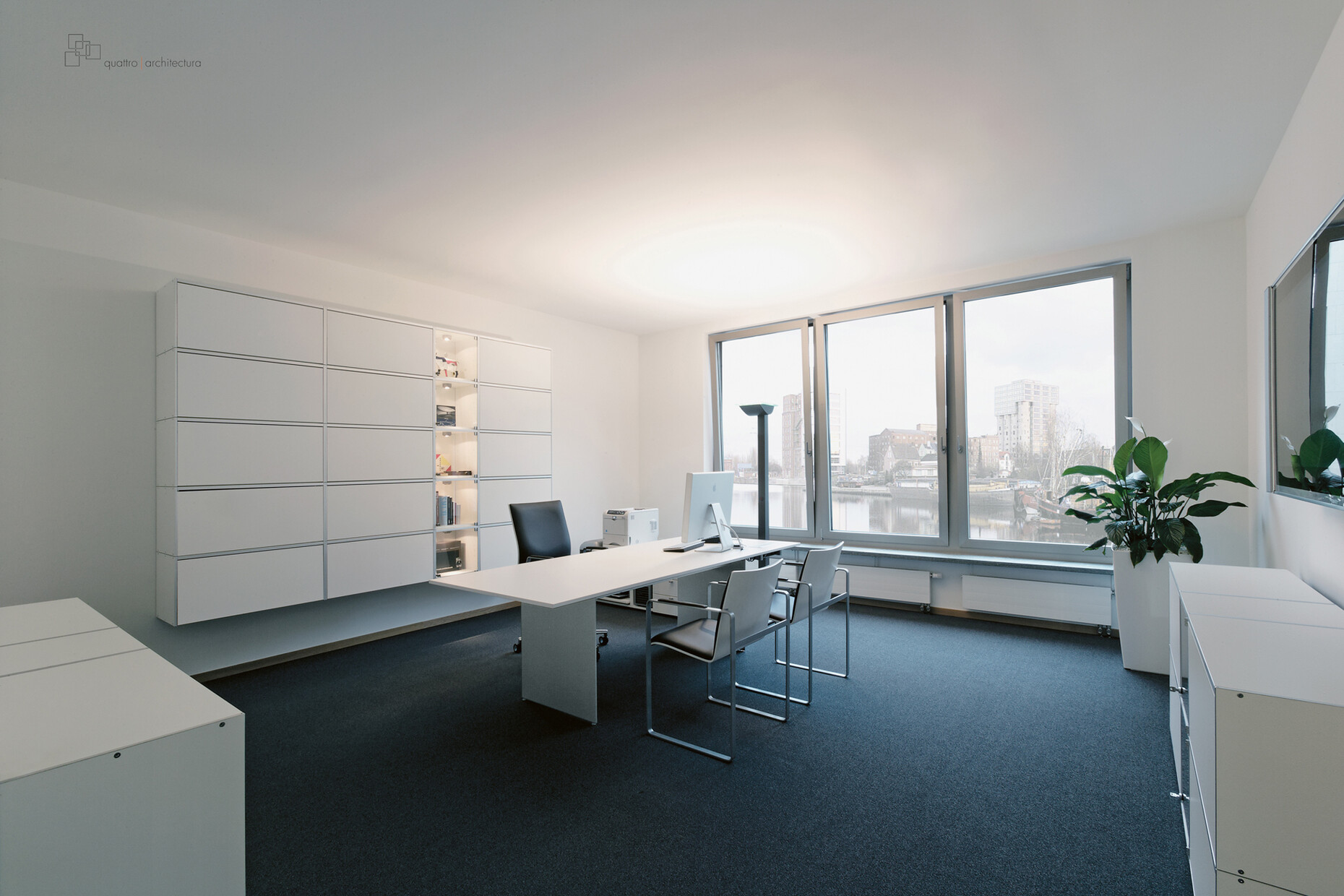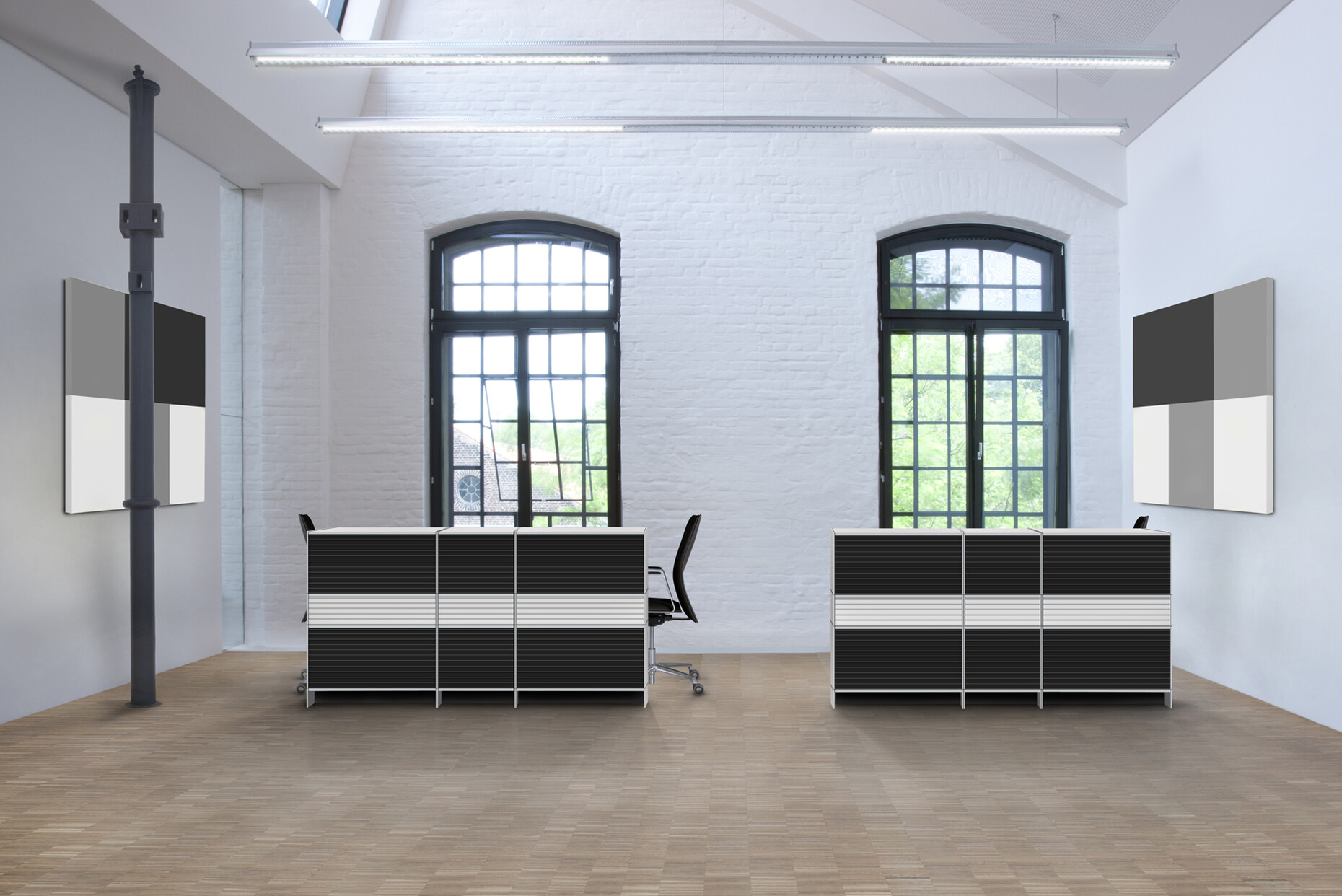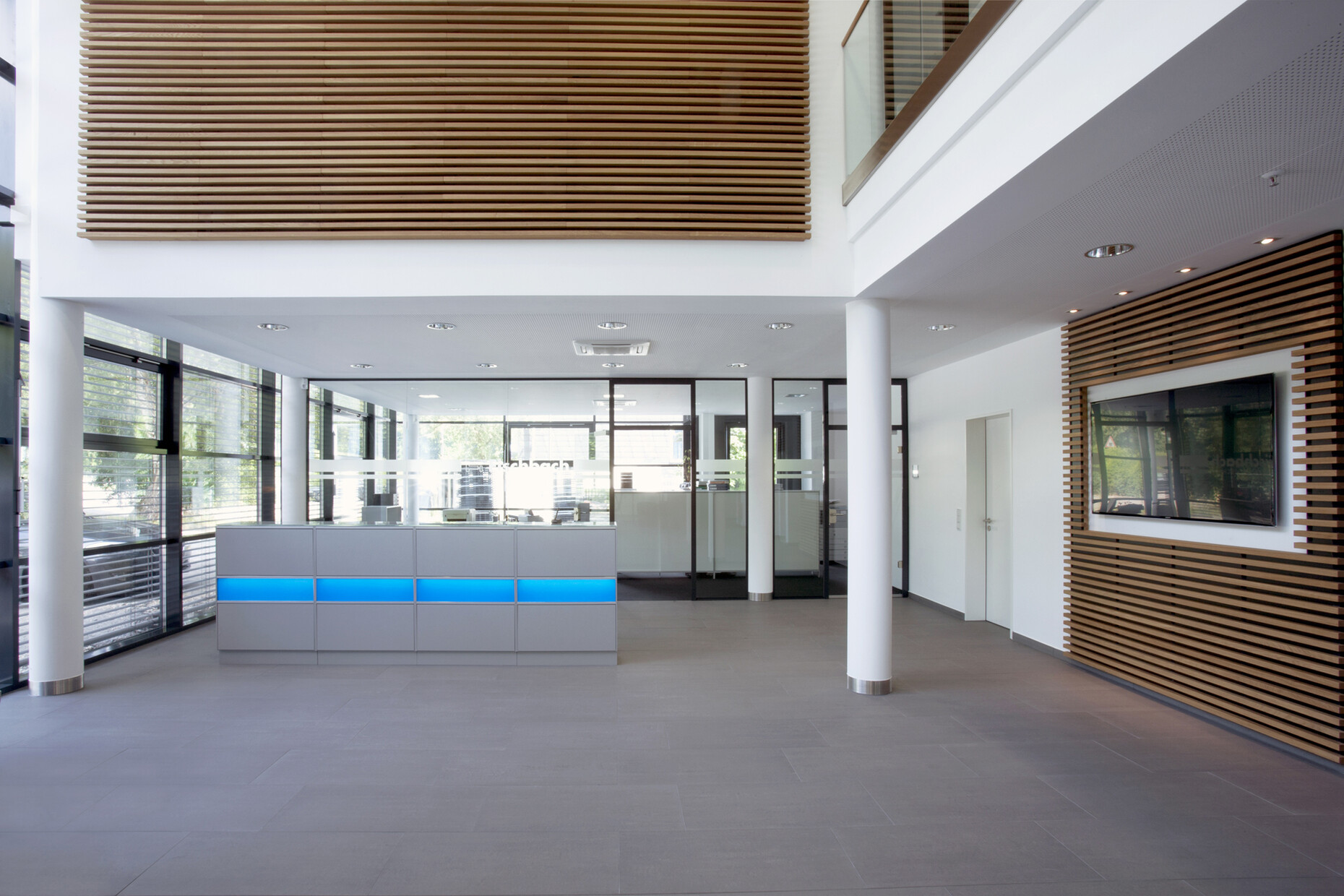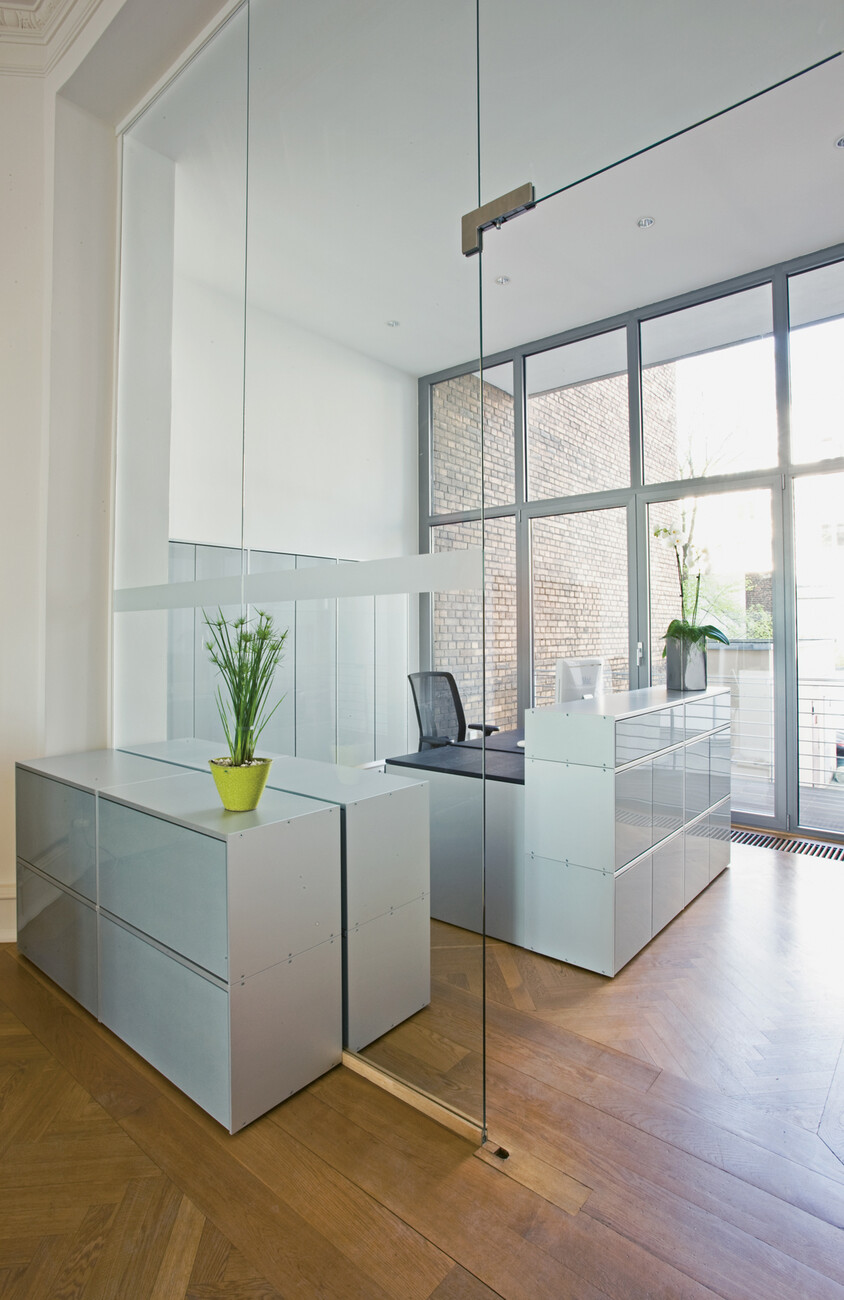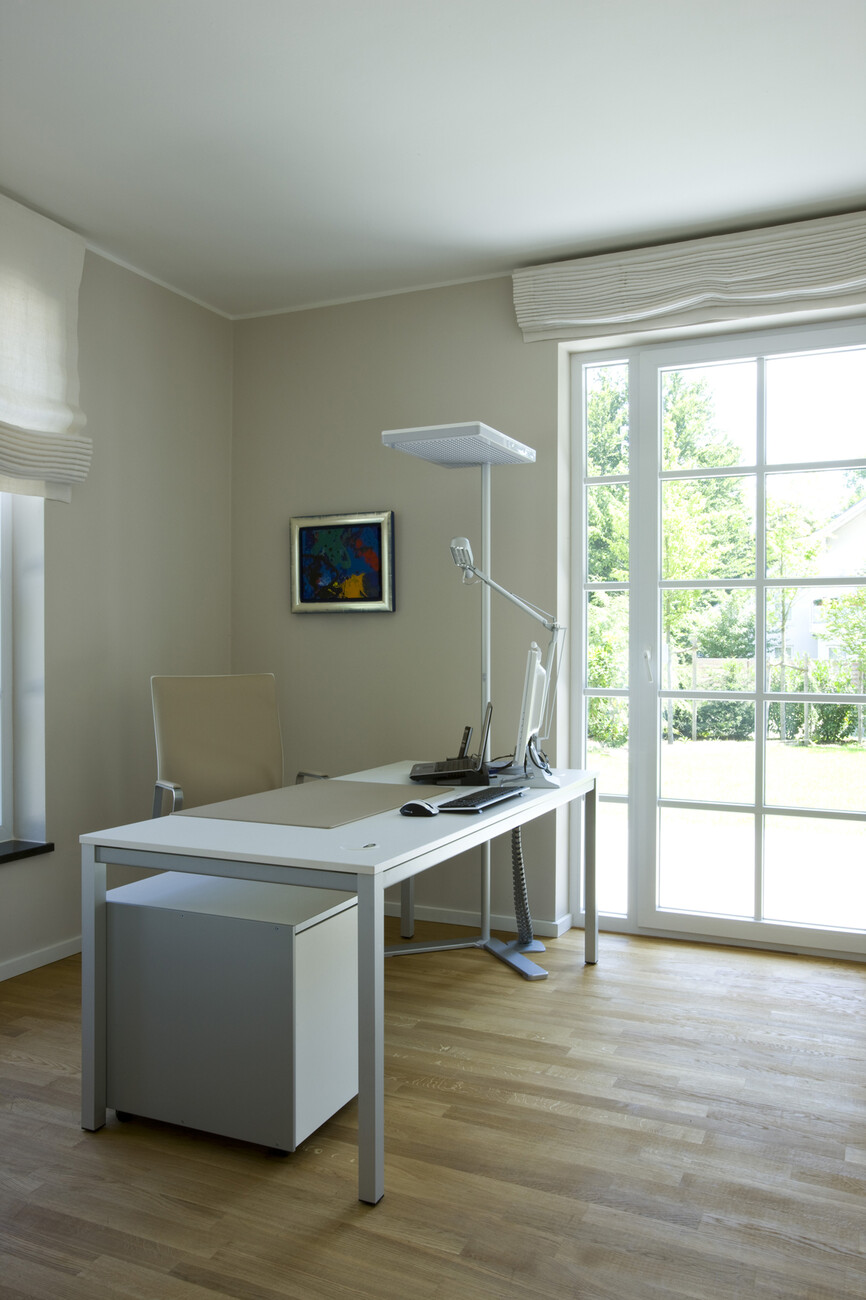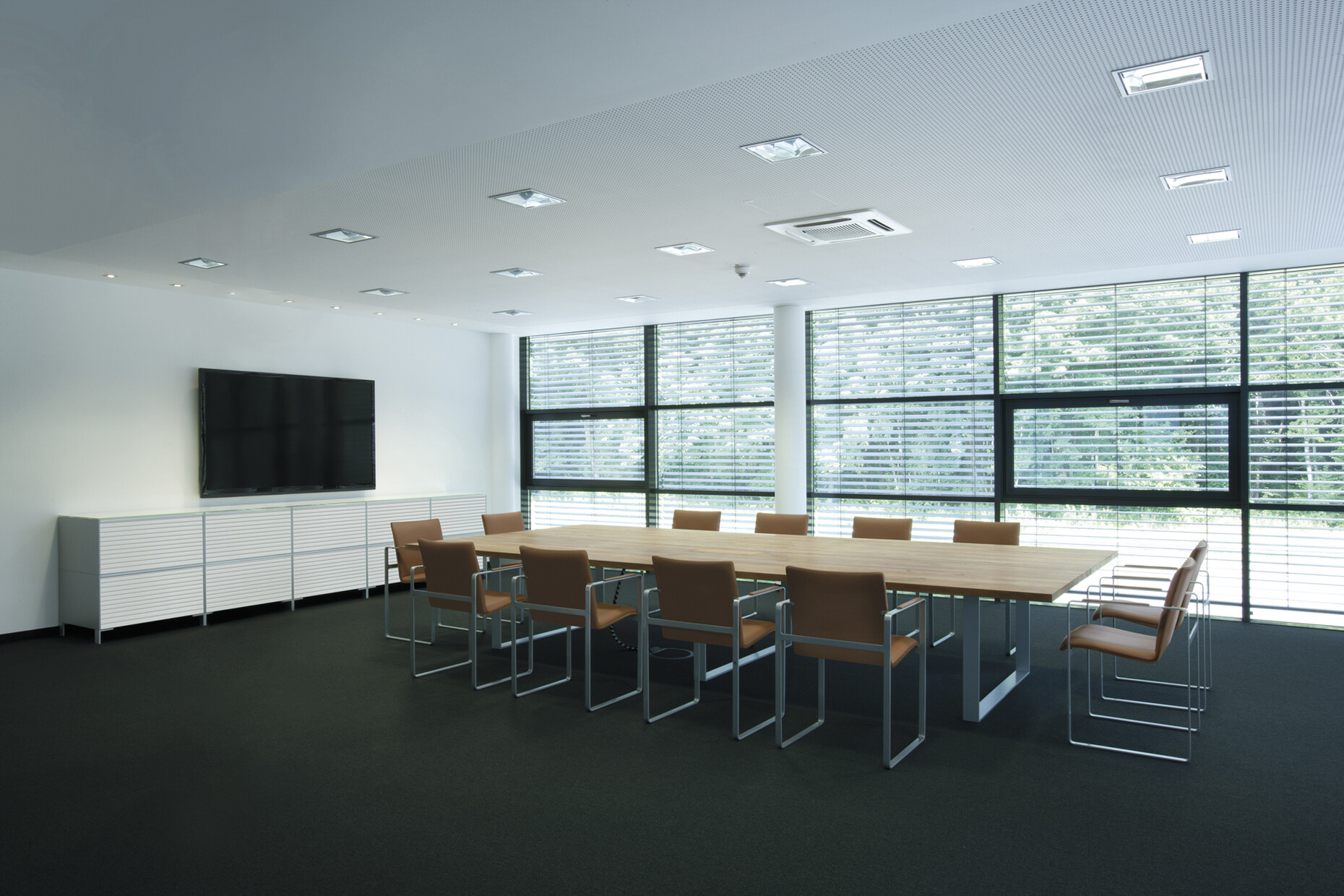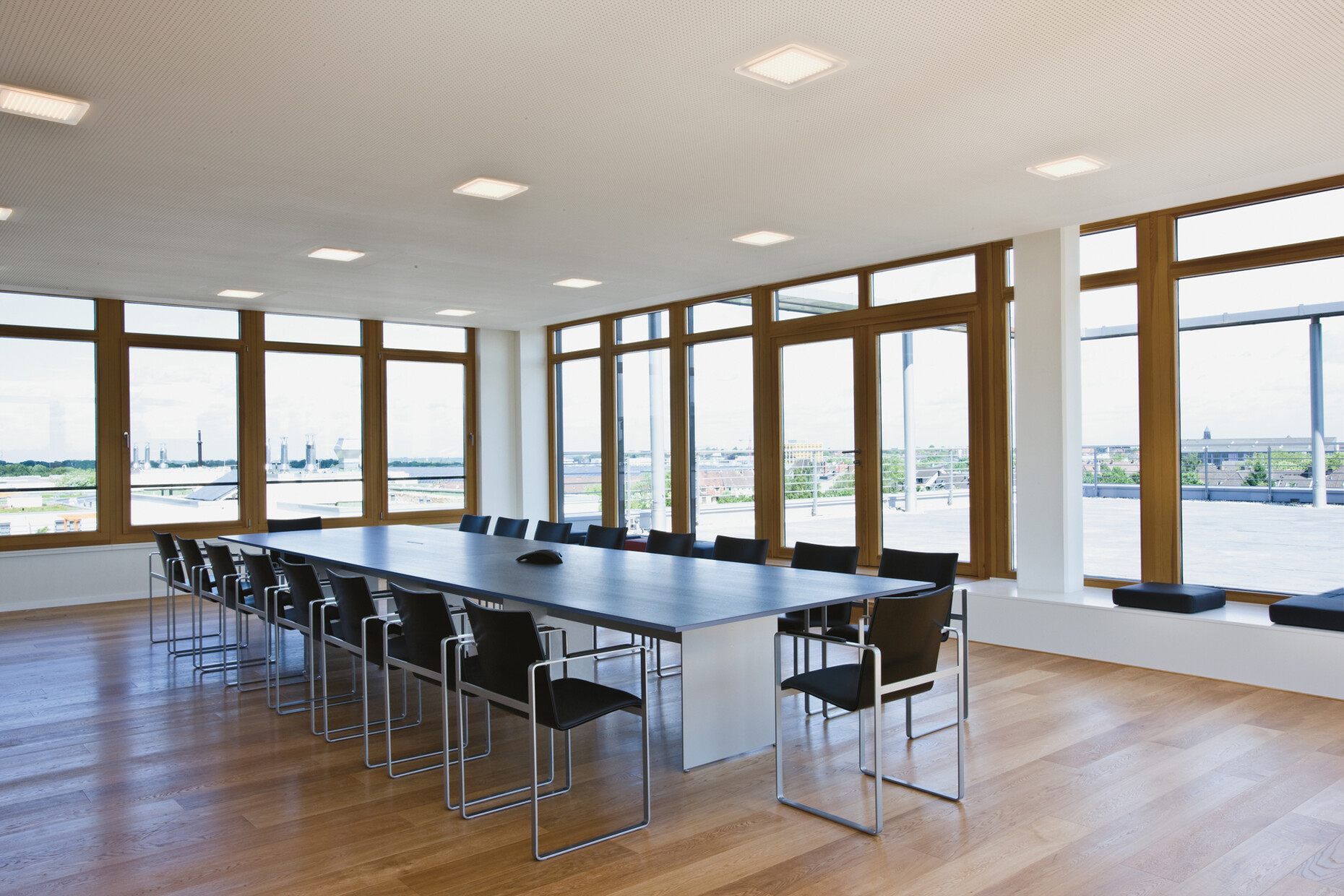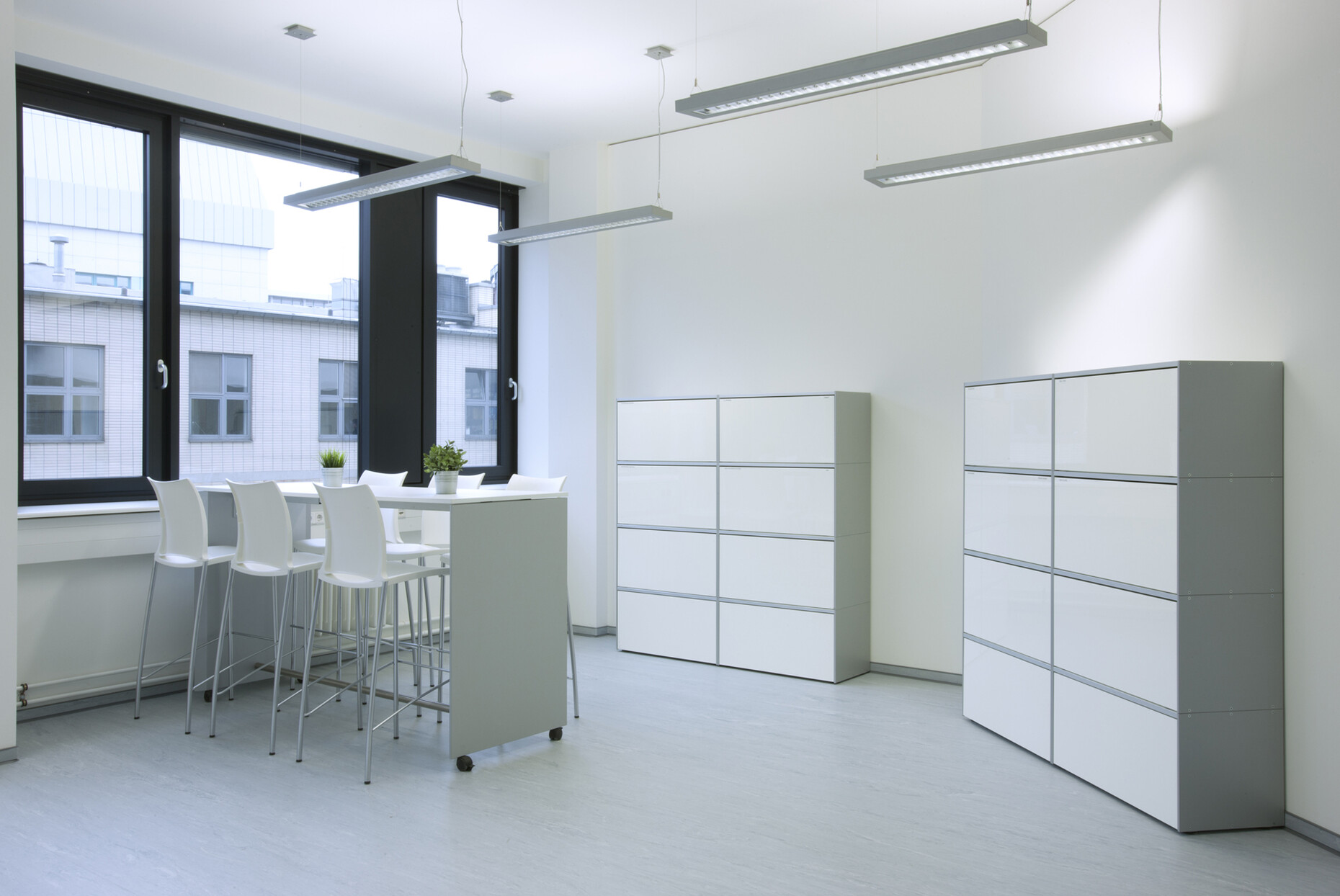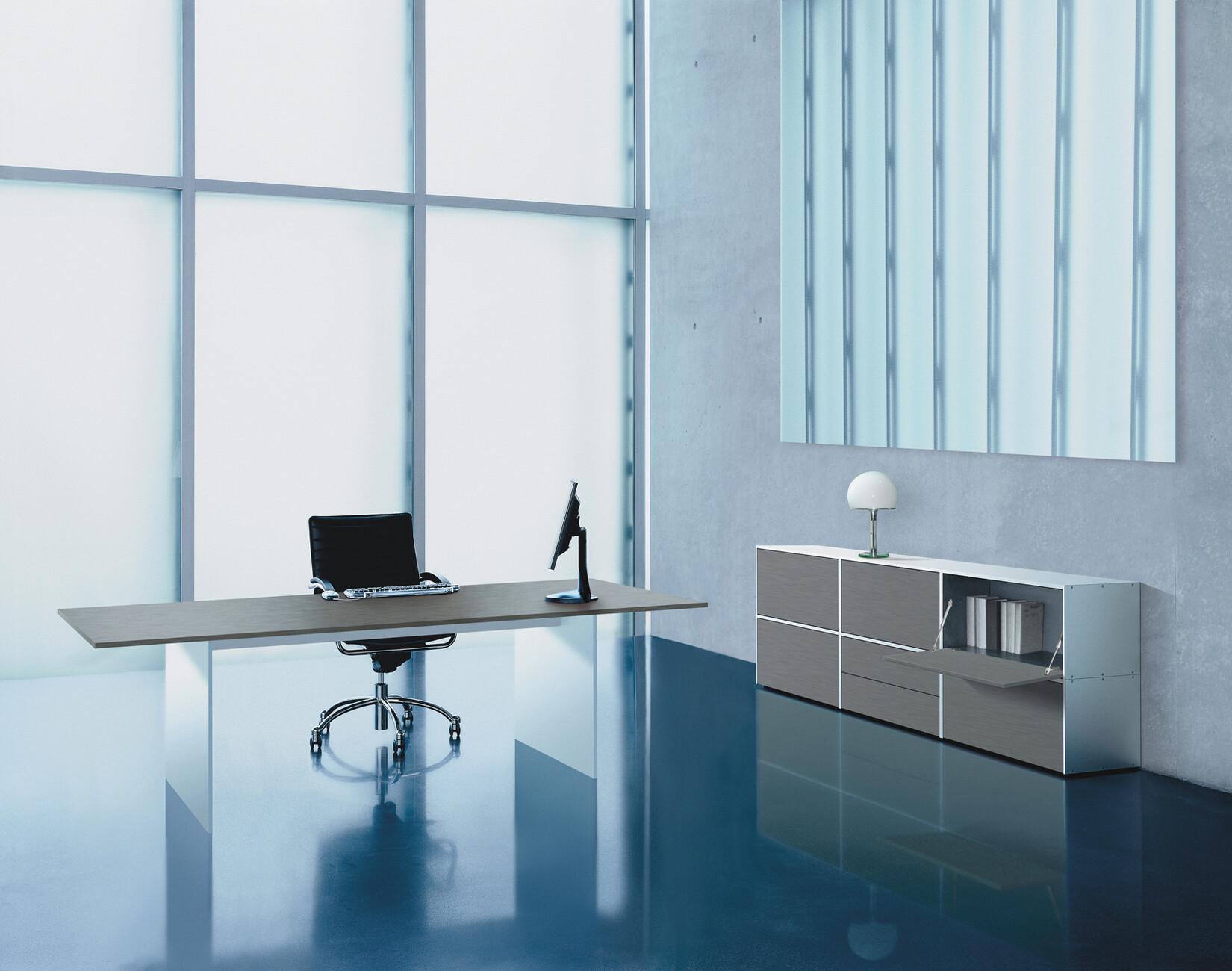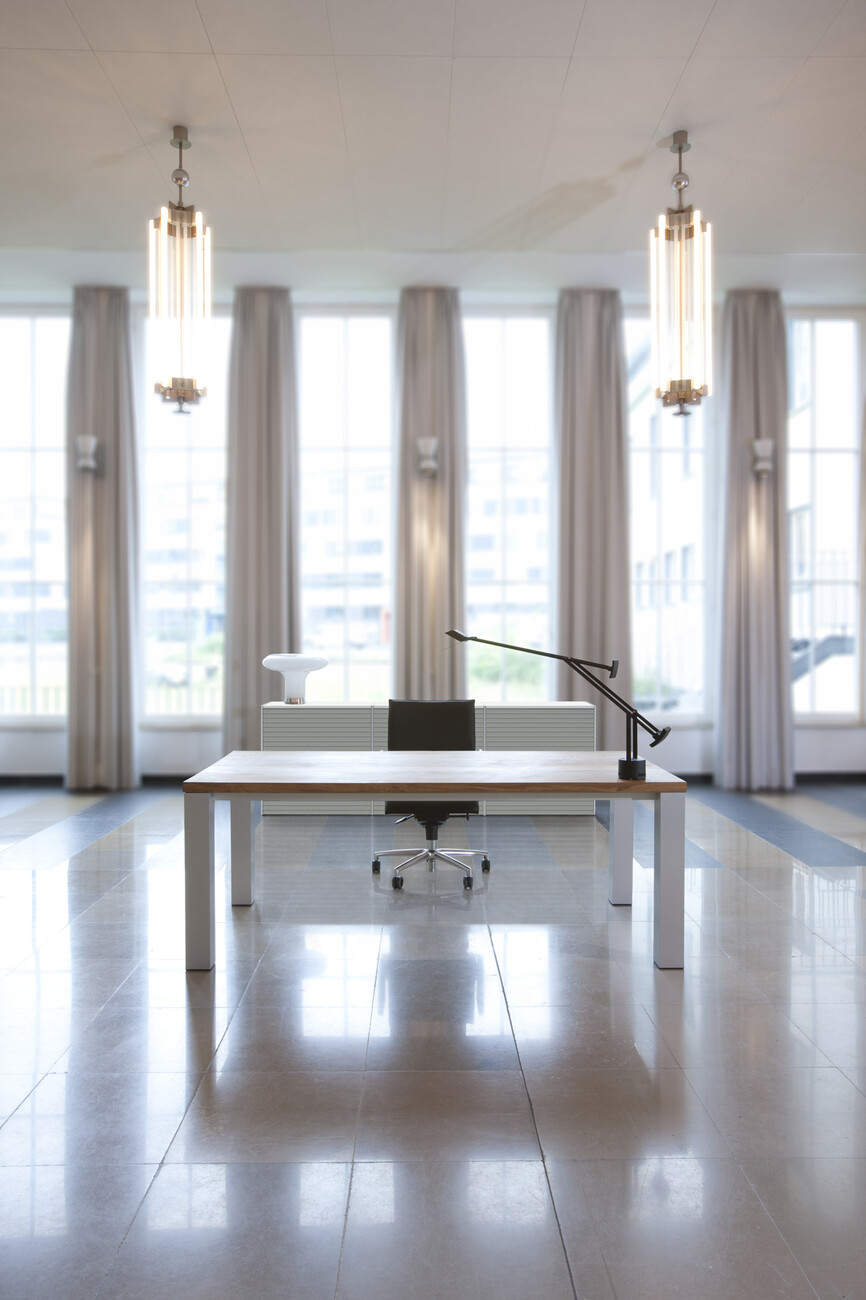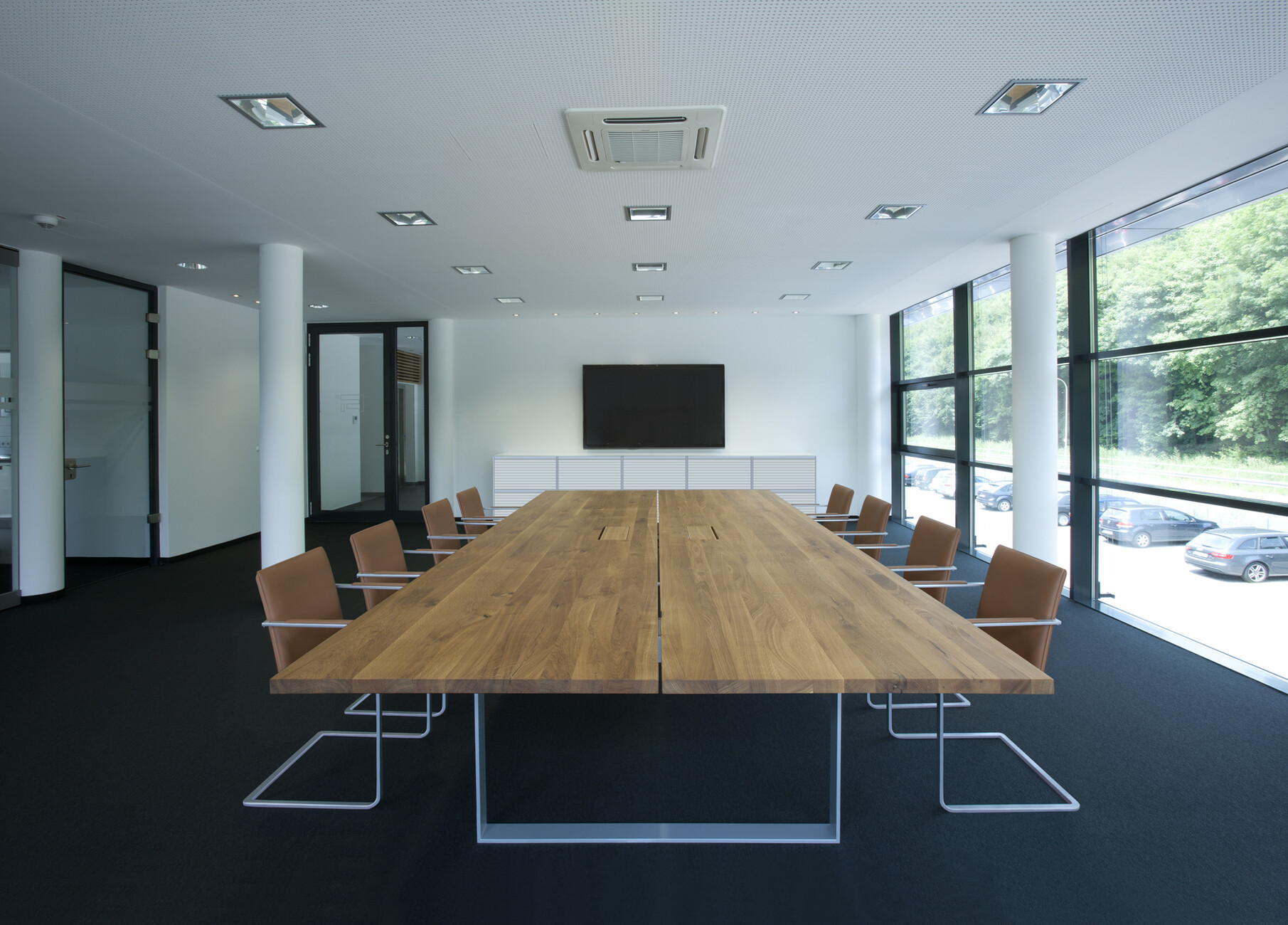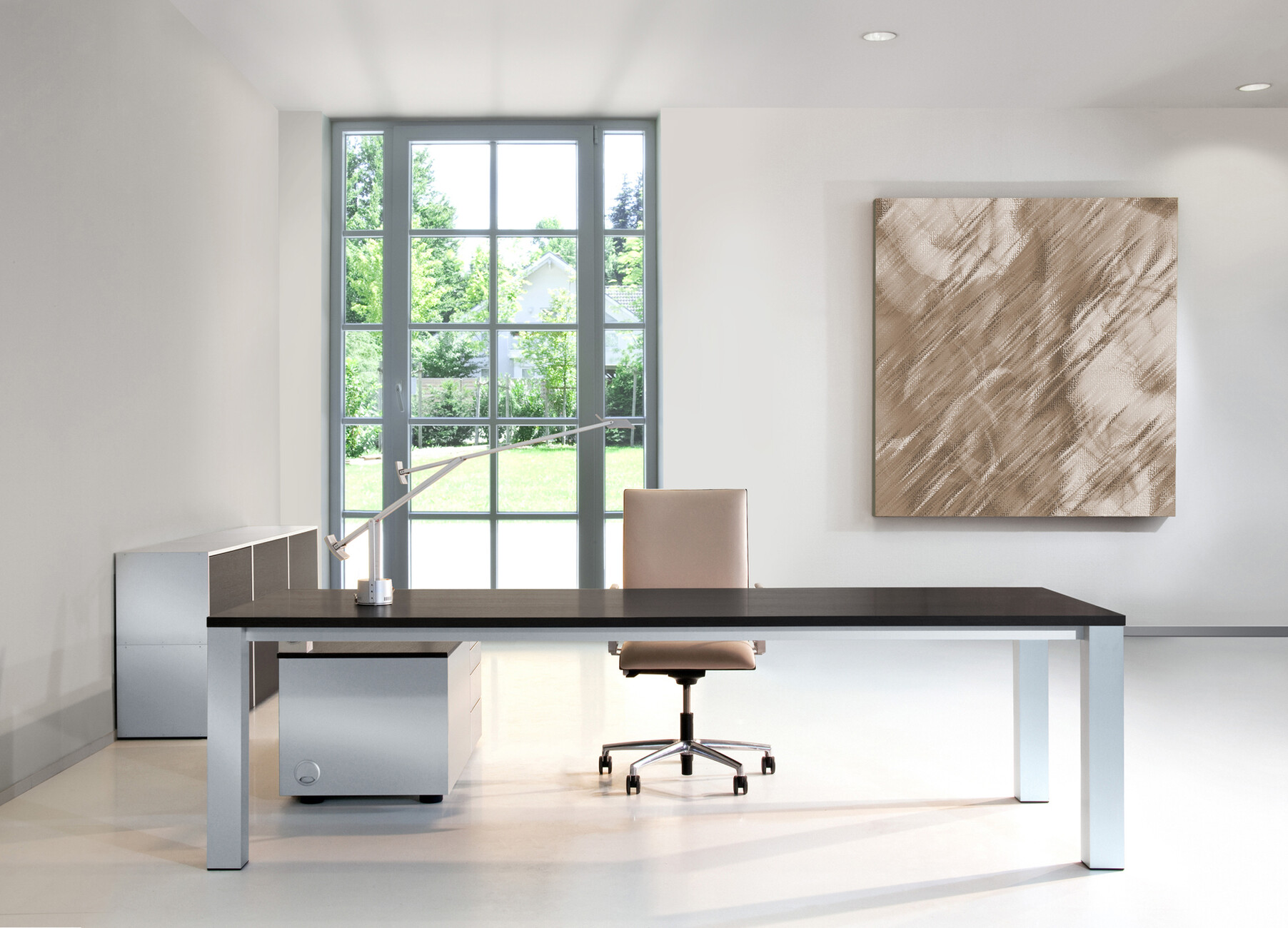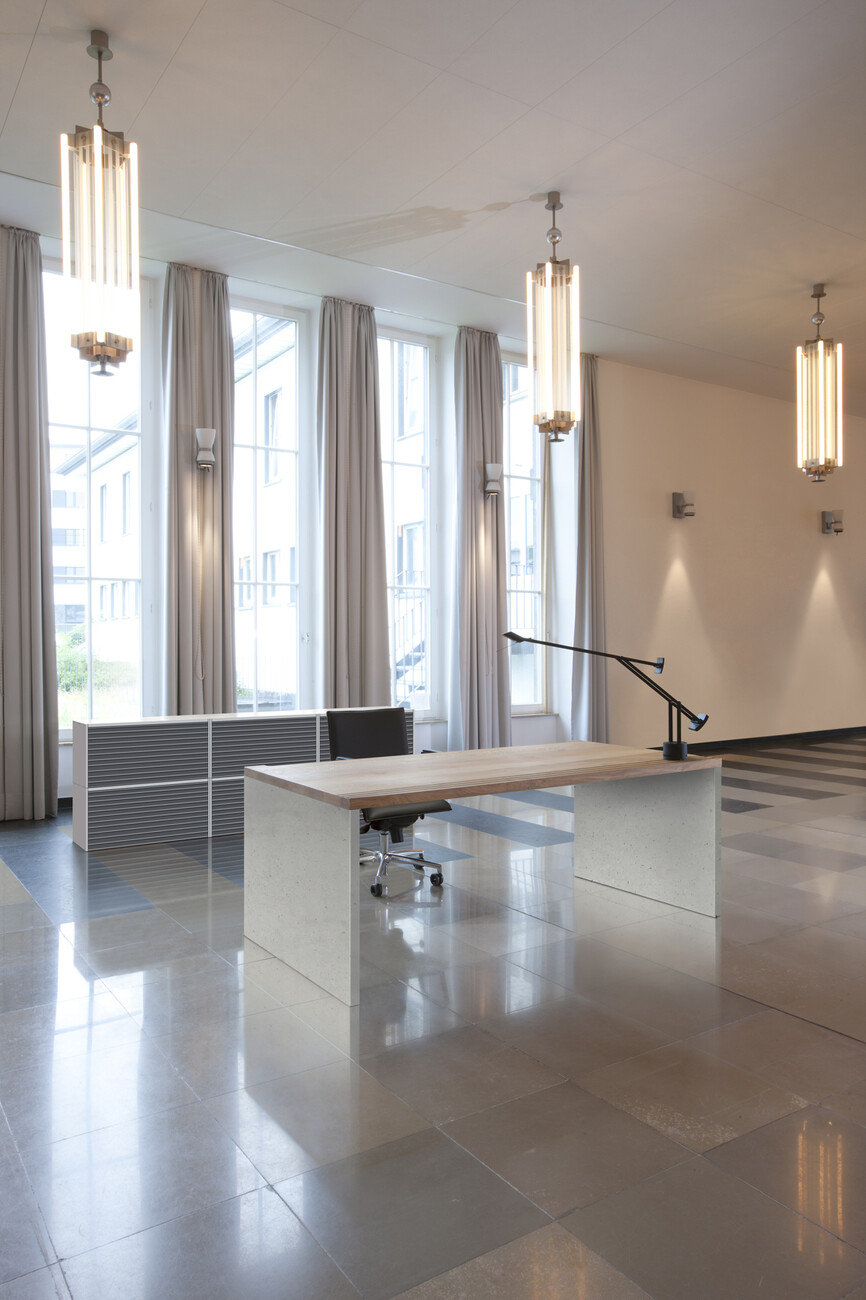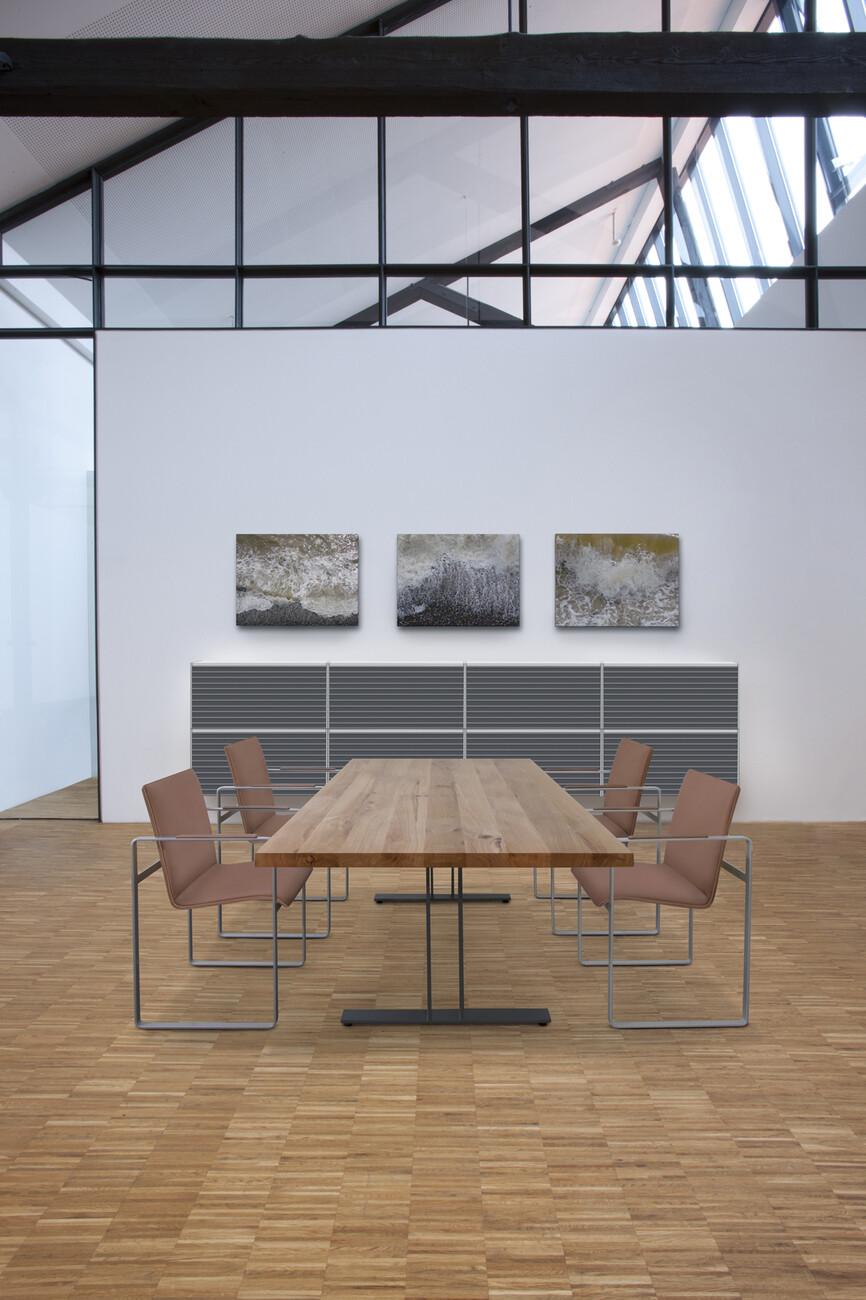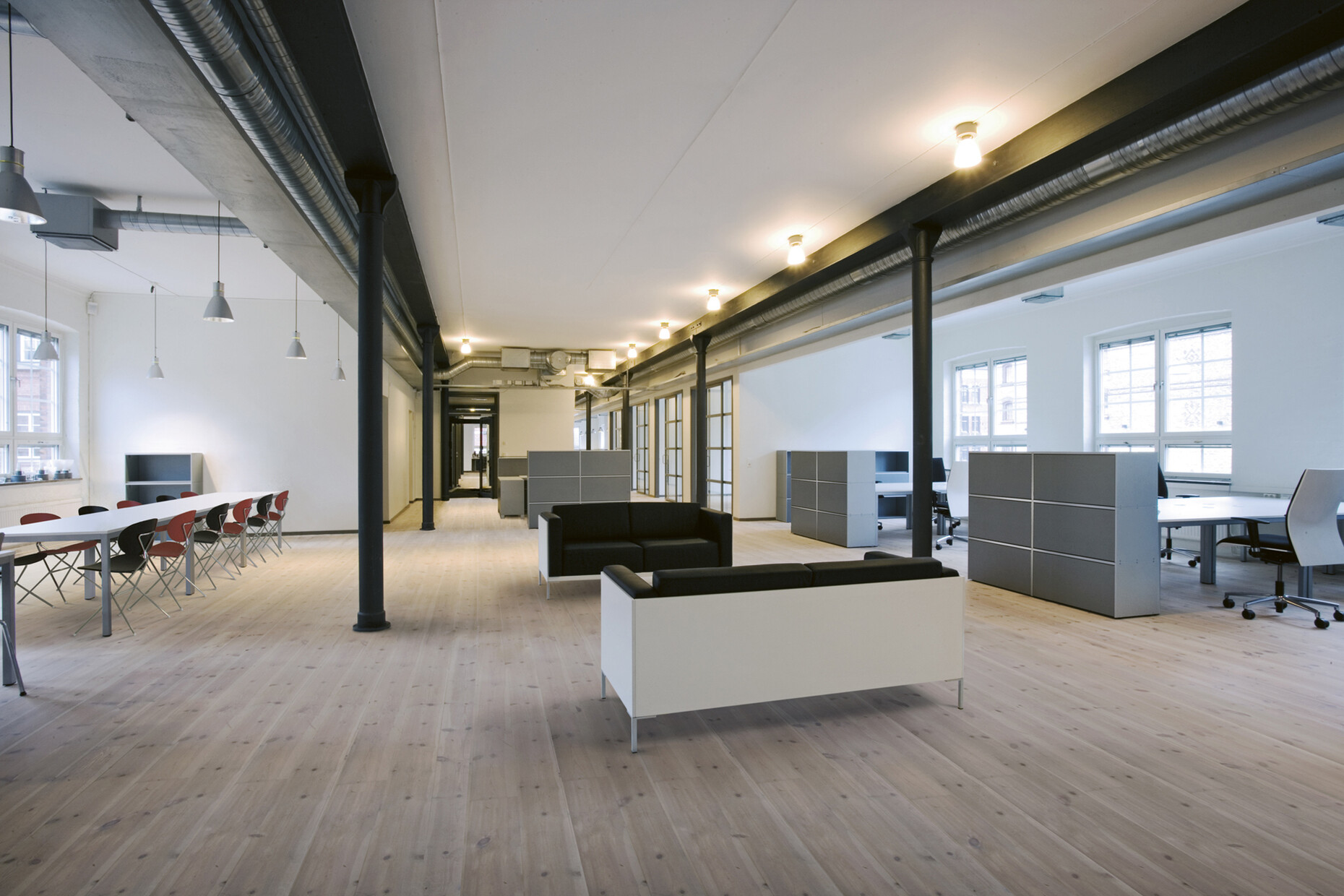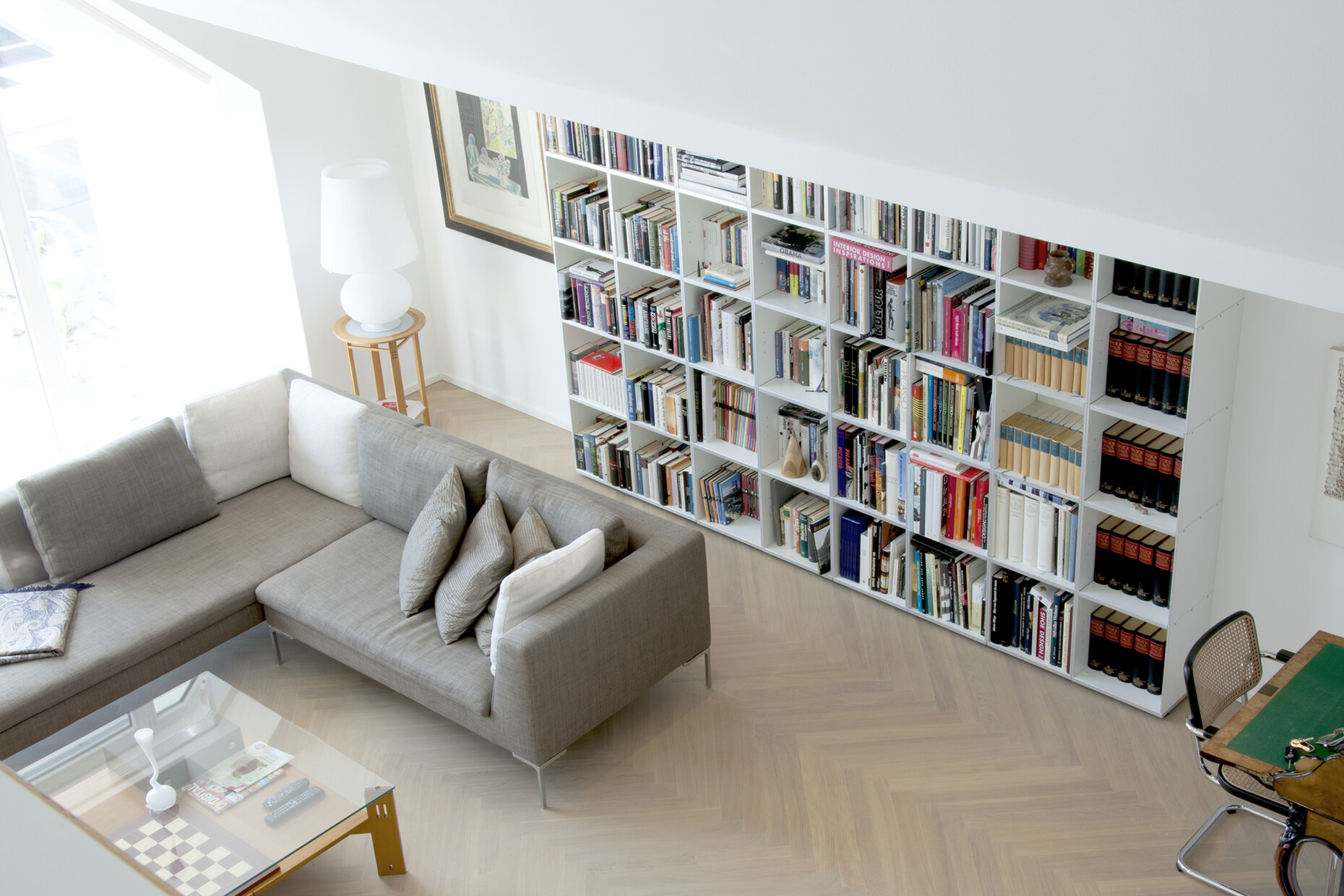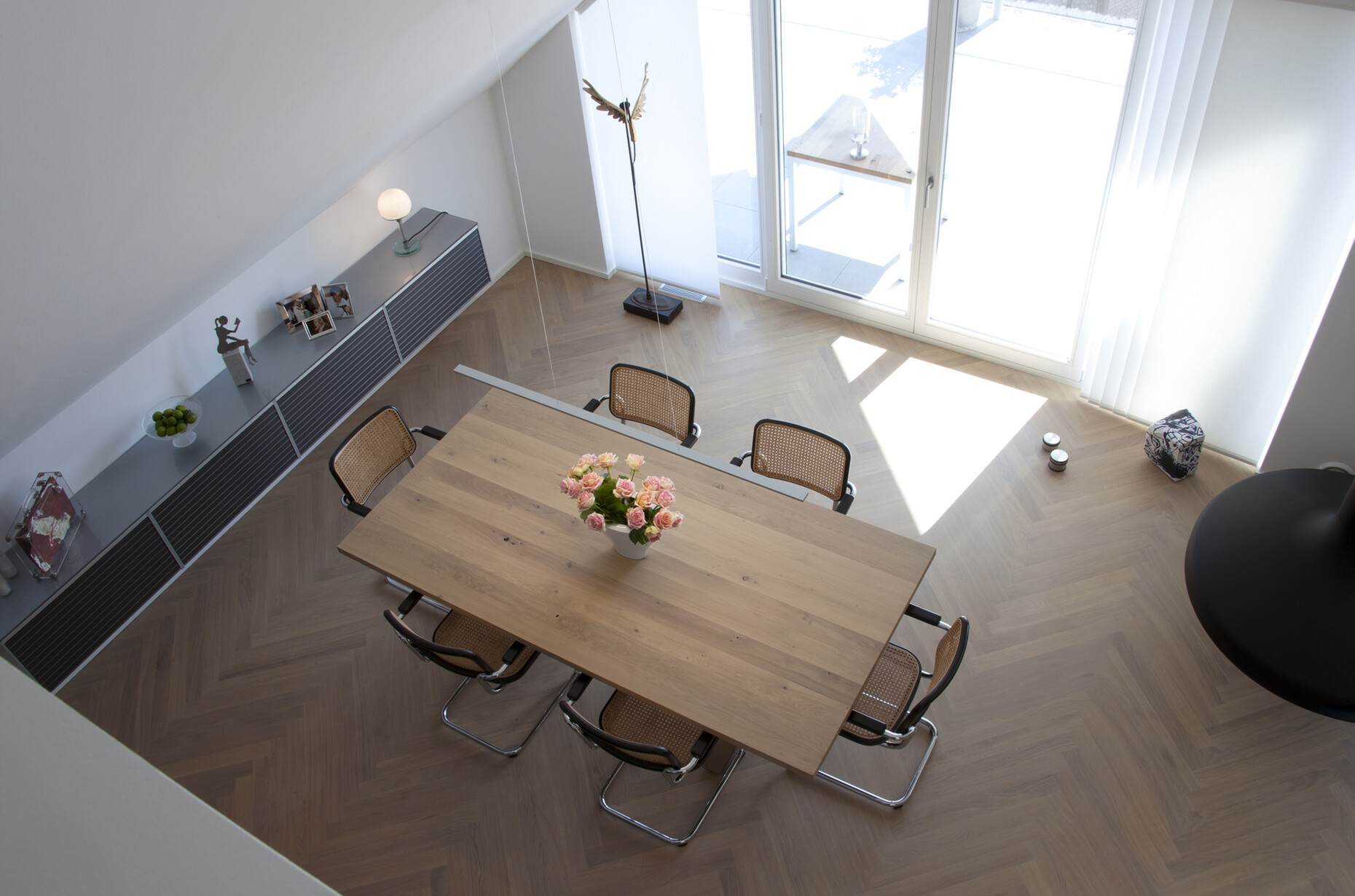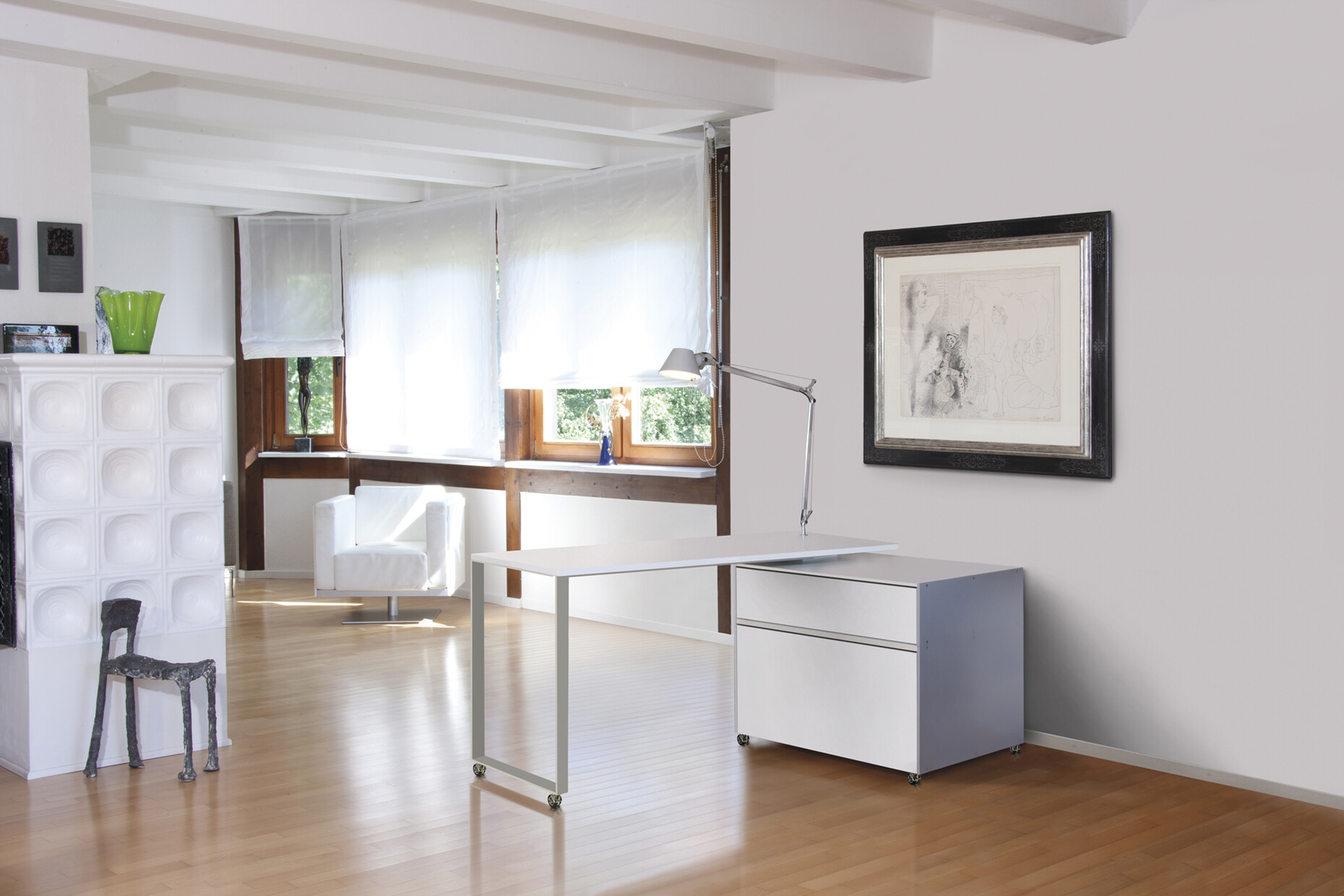In the Bauhaus spirit
Names reveal a lot – in particular about the person choosing them. Often, the more pompous the name, the more modest the ancestry. Seen thus, when a product series bears the down-to-earth name “Baureihe E” – as in “Series E” – the moniker attests to its exceptional lineage. The furniture items in Weko’s “Baureihe E” are the spiritual descendants of absolute thoroughbreds. Because the Bauhaus heritage flows through their veins. The system’s design explicitly refers to the underlying aesthetic principles of Classical Modernism. Nothing is simply decorative. Appearance is defined by function and longevity. The design is destined to be convincing down through time, like the famous furniture designs by the Bauhaus artists.
The almost infinitely variable cupboard element forms the core of the system. It is based on a cube with sides of 40cm as the basic unit and the grid from which all element sizes derive. The individual elements are inter-connected by so-called system pegs inserted in the sidewalls. Only in the horizontal need all elements of a layer have the same height. Moreover, “Baureihe E” provides optimal flexibility meaning you can create complete interior architectures using the system. Thanks to the uniform raster grid and width of dividing walls, the overall image is always harmonious.
The front of each element boasts a no-handle front, that functions as a flap, door or drawer. The fronts come in numerous materials (e.g., in Melamine, veneered, lacquered or glass) and colors. “Baureihe E” therefore adapts to almost any setting, creating interiors that range from mater-of-fact to prestigious, from unconventional to dignified. The cupboard element can be expanded to form a so-called media wall. It serves as the basis for screens or video beamers. Moreover, the wall conceals cabling and other supply ducts. And even functions as a “chimney” for the electronic appliances that are operated in the sections of the cupboard element.
In the office and at home
The “combined system tables” are another “Baureihe E” item, an ingenious table system whose core elements is a base frame that can take four aluminum legs. The structure can be used for standalone tables up to three meters long and for group and conference tables. The frame can be combined with different tops. Moreover, Weko offers extensive cable management options and a castor-based container as an add-on. An alternative to the system tables: the “Lift” system tables, that can be set electrically at any height from 680 to 118mm. Another “Baureihe E” item: the system table with sides where the top rests on panel-like side elements.
As part of “Baureihe E”, Weko offers a “Premium” line for especially prestigious settings. It includes desks and conference tables made of ultra-high-grade materials and available in both standard and special sizes. You can choose from an array of types of top and frame. Here, again, there is a “Lift” table. And for private uses, Weko has developed its “networked home office” as an extension of “Baureihe E”. It consists of a sideboard for materials and appliances over which the desk-top swivels at any angle to save space and avoid reflections.
Since premiering, “Baureihe E” has won practically all the important German design prizes. In order to enhance the system’s success even further going forwards, since this year Weko has joined forces with office furniture specialist Hund Möbelwerke. Incidentally, the keepers of the Bauhaus grail have long since sat up and taken note of “Baureihe E”: Stiftung Bauhaus Dessau chose the system for the fit-out of its offices in Walter Gropius’ Bauhaus building.
